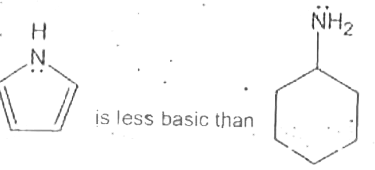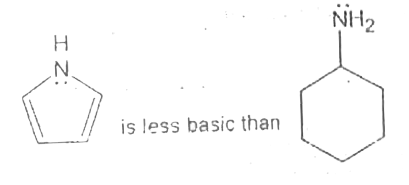Statement-2 : 1,1- dichloroethane on treatment with aq KOH yield ethanal
Statement -2 : Ethylene dichloride is a unsaturated compound.
Statement-1 is True , Statement-2 is True , Statement-2 is a correct explanation for Statement-1
Statement-1 is True , Statement-2 is True , Statement-2 is NOT a correct explanation for Statement-1
Statement-1 is True , Statement-2 is False
Statement-1 is False , Statement-2 is True
The correct Answer is:C
To solve the question, we need to evaluate the two statements provided:
Statement 1: 1,1-Dichloroethane on treatment with aqueous KOH yields ethanol.
Statement 2: Ethylene dichloride is an unsaturated compound.
1. Analyze Statement 1:
- 1,1-Dichloroethane has the formula CH3CHCl2.
- When treated with aqueous KOH, the hydroxide ions (OH⁻) will attack the carbon atoms bonded to chlorine.
- Since there are two chlorine atoms attached to the same carbon (geminal dihalide), both chlorines can be replaced by hydroxyl groups (OH).
- The reaction can be represented as:
CH3CHCl2+2KOH→CH3C(OH)2+2KCl
- The product formed is a diol (CH3C(OH)2), which is unstable due to the presence of two hydroxyl groups on the same carbon.
- This diol will undergo dehydration (loss of water) to form ethanal (acetaldehyde, CH3CHO):
CH3C(OH)2→CH3CHO+H2O
- Thus, Statement 1 is True.
2. Analyze Statement 2:
- Ethylene dichloride (1,2-dichloroethane) has the formula CH2Cl-CH2Cl.
- To determine if it is saturated or unsaturated, we check for the presence of double or triple bonds between carbon atoms.
- In ethylene dichloride, there are only single bonds between the carbon atoms (C-C), indicating that it is a saturated compound.
- Therefore, Statement 2 is False.
Conclusion:
- Statement 1 is True.
- Statement 2 is False.
The correct option is C: Statement 1 is True, Statement 2 is False.
---
Statement 2: Ethylene dichloride is an unsaturated compound.
- 1,1-Dichloroethane has the formula CH3CHCl2.
- When treated with aqueous KOH, the hydroxide ions (OH⁻) will attack the carbon atoms bonded to chlorine.
- Since there are two chlorine atoms attached to the same carbon (geminal dihalide), both chlorines can be replaced by hydroxyl groups (OH).
- The reaction can be represented as:
CH3CHCl2+2KOH→CH3C(OH)2+2KCl
- The product formed is a diol (CH3C(OH)2), which is unstable due to the presence of two hydroxyl groups on the same carbon.
- This diol will undergo dehydration (loss of water) to form ethanal (acetaldehyde, CH3CHO):
CH3C(OH)2→CH3CHO+H2O
- Thus, Statement 1 is True.
- Ethylene dichloride (1,2-dichloroethane) has the formula CH2Cl-CH2Cl.
- To determine if it is saturated or unsaturated, we check for the presence of double or triple bonds between carbon atoms.
- In ethylene dichloride, there are only single bonds between the carbon atoms (C-C), indicating that it is a saturated compound.
- Therefore, Statement 2 is False.
- Statement 1 is True.
- Statement 2 is False.
Topper's Solved these Questions
- HALOALKANES AND HALOARENES BOOK - AAKASH INSTITUTE ENGLISHCHAPTER - HALOALKANES AND HALOARENES EXERCISE - Assignment (Section - F) (Matrix - Match Type Question )
4 Videos
- HALOALKANES AND HALOARENES BOOK - AAKASH INSTITUTE ENGLISHCHAPTER - HALOALKANES AND HALOARENES EXERCISE - Assignment (Section - G) (Integer Answer Type Question )
5 Videos
- HALOALKANES AND HALOARENES BOOK - AAKASH INSTITUTE ENGLISHCHAPTER - HALOALKANES AND HALOARENES EXERCISE - Assignment (Section - D) (Linked Comprehension Type Question )
8 Videos
- GENERAL PRINCIPLES AND PROCESSES OF ISOLATION OF ELEMENTSBOOK - AAKASH INSTITUTE ENGLISHCHAPTER - GENERAL PRINCIPLES AND PROCESSES OF ISOLATION OF ELEMENTSEXERCISE - Try Yourself
33 Videos
- HYDROCARBONSBOOK - AAKASH INSTITUTE ENGLISHCHAPTER - HYDROCARBONSEXERCISE - Assignment(Section - C) (Previous Years Questions)
60 Videos
Similar Questions
Knowledge Check
Read the given statements and select the correct option.
Statement 1: Ethylene is a gaseous hormone.
Statement 2: Ethylene causes climacteric ripening of fruits.ABoth statements 1 and 2 are corretBStatement 1 is incorrect but statement 2 is incorrectCStatement 1 is incorrect but statement 2 is correctDBoth statements 1 and 2 are incorrect
Which of the following statements is incorrect for ethylene dichloride and ethylidene chloride?
View SolutionStatement-1: Alkynes are more reactive than alkene towards HBr
and Statement-2: Alkynes have higher degree of unsaturation than alkenes.
View SolutionStatement-1: Vinyl chloride is more reactive than ethylene.
and
Statement-2: Addition of HBr on vinyl chloride follows Markovnikoff's addition.
(a) Statement-1 is true, Statement-2 is true, Statement-2 is a correct explanation for Statement-1
(b) Statement-1 is true, Statement-2 is true, Statement-2 is not a correct explanation for Statement -1
(c) Statement -1 is true, Statement -2 is false
(d) Statement -1 is false, Statement -2 is true
View SolutionStatement 1. If sin−1x=cos−1x,thenx=1√2, Statement 2. sin−1x+cos−1x=π2,1≤x←1 (A) Both Statement 1 and Statement 2 are true and Statement 2 is the correct explanation of Statement 1 (B) Both Statement 1 and Statement 2 are true and Statement 2 is not the correct explanatioin of Statement 1 (C) Statement 1 is true but Statement 2 is false. (D) Statement 1 is false but Statement 2 is true
View SolutionStatement 1. 2sinx+2cosx≥21−1√2 for all real x, Statement 2. For positive numbers, AM≥G.M. (A) Both Statement 1 and Statement 2 are true and Statement 2 is the correct explanation of Statement 1 (B) Both Statement 1 and Statement 2 are true and Statement 2 is not the correct explanation of Statement 1 (C) Statement 1 is true but Statement 2 is false. (D) Statement 1 is false but Statement 2 is true
View SolutionStatement 1. cos−1x−sin−1(x2+√(3−3x2)2)=−π3,where12≤x≤1, Statement 2. 2sin−1x=sin−12x√1−x2,where−1√2≤x≤1√2. (A) Both Statement 1 and Statement 2 are true and Statement 2 is the correct explanation of Statement 1
(B) Both Statement 1 and Statement 2 are true and Statement 2 is not the correct explanatioin of Statement 1
(C) Statement 1 is true but Statement 2 is false.
(D) Statement 1 is false but Statement 2 is true
View SolutionStatement 1. ∣∣x2−4∣∣+|sinx|=∣∣x2+sinx−4∣∣,ifxε[2,π], Statement 2. |x|+|y|=|x+y|,ifxy≤0 (A) Both Statement 1 and Statement 2 are true and Statement 2 is the correct explanation of Statement 1 (B) Both Statement 1 and Statement 2 are true and Statement 2 is not the correct explanatioin of Statement 1 (C) Statement 1 is true but Statement 2 is false. (D) Statement 1 is false but Stastement 2 is true
View Solution


